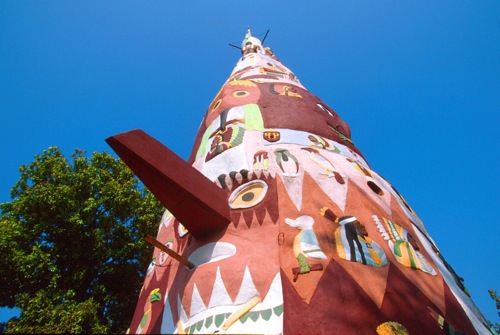
All photos courtesy Oklahoma Tourism Dept.
“My hand is not the color of yours, but if I pierce it, I shall feel pain. If you pierce your hand, you also feel pain. The blood that will flow from mine will be the same color as yours. I am a man. The same God made us both.”
Those words, spoken by Chief Standing Bear of the Ponca Indians, symbolized a defining moment in the history of Oklahoma. It was with his right hand raised in a small Nebraskan courtroom on May 12, 1879, that this Native American chief listened as Judge Elmer Dundy ruled that “an Indian is a person.” As the heavy gavel struck hard that day, the entire Indian Territory of the state of Oklahoma felt the impact of this monumental civil rights win for the Native American people, and to this day, a statue of Chief Standing Bear stands proudly in front of the museum at Standing Bear Park in Ponca City, Oklahoma, as a reminder of the state’s proud Native American brotherhood and heritage.
Brimming with a distinctive diversity as indigenous to the state’s culture as its Native American ancestry, Oklahoma’s beauty lies both in its rolling Southwestern landscapes and its rich legacy steeped with astute pride, ancient customs and astounding adversity. Although the Sooner State is full of outdoor adventures, foodie finds and luxurious spa and shopping options, it’s been the state’s Native American heritage that has truly formed Oklahoma’s identity as a strong subnation with a proud population. The name Oklahoma derives from the Choctaw words “okla” (red) and “humma” (people), so the state’s name translates to “red people.”
Home to more American Indian tribal headquarters than any other state in the nation, Oklahoma has a Native American history that dates back more than 30,000 years. But the legacy of brotherhood lives on every day with places and events all across the state, offering groups a chance to delve into the history, legend and tradition of the ancient and modern-day tribes.
A Heritage of Diversity
“In general, I think our Native American heritage allows us to have so much more diversification because people think of Native Americans as one, but each tribe has a very different background,” said Todd Stallbaumer, consumer and trade marketing director for the Oklahoma Tourism and Recreation Department. “Some were forced to Oklahoma, and some actually migrated and chose to stay. Because they were all here at the same time they spoke different languages, they had to learn how to get along with each other, and from that I think we’ve learned a lot of lessons on how we can be those people in the state still.”
Although numerous Native American groups inhabited Oklahoma for more than three centuries, it wasn’t until the early 1830s that Oklahoma became known as Indian Territory. After the Indian Removal Act of 1830 was passed by Congress, the nearly 125,000 Native Americans living throughout the sprawling acres of Georgia, Alabama, North Carolina, Florida and Tennessee were forced to leave their land and journey along a very difficult (and deadly) pathway known today as the Trail of Tears.
It was then that a treaty was sworn that Oklahoma would officially be recognized as the Native American’s Promised Land “for as long as the grass grows and the water flows.” The Five Civilized Tribes — called “civilized” based on their favorable trade relations with the Anglo-European colonials at the time — consisted of the Cherokees, the Chickasaws, the Choctaws, the Creeks and the Seminoles.
Not even 50 years had passed after these tribes settled in their new territory before thousands of eager white settlers lined up along the border of Kansas to claim a bit of Oklahoma property in the Land Rush of 1889. The settlers that entered the race early by hiding out on unoccupied land, making their way into the Cherokee Strip, were known as “legal sooners,” from which the state’s nickname, “The Sooner State,” derives.
“One of the things that people don’t realize is that the way the state was settled — like how New York City is a melting pot of the city, we’re a melting pot of the state,” said Stallbaumer. “People came in with this entrepreneurial spirit which, in turn, also took away from the tribes because, once again, their language was taken away from them. So some of Oklahoma’s culture has come from learning to adapt to diversity and have that entrepreneurial spirit to make things grow and become more successful.”









